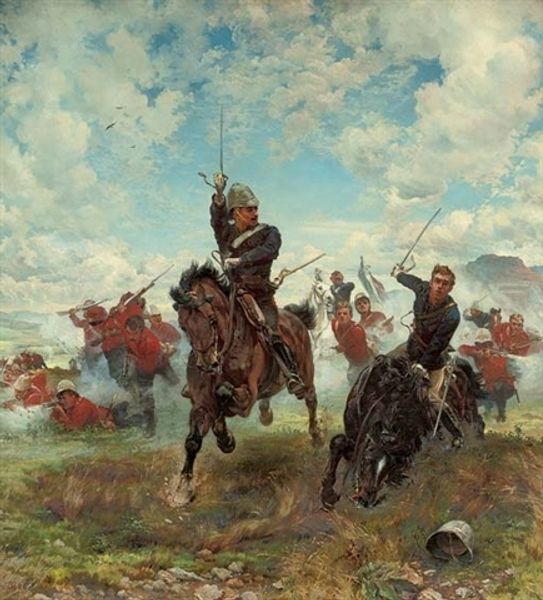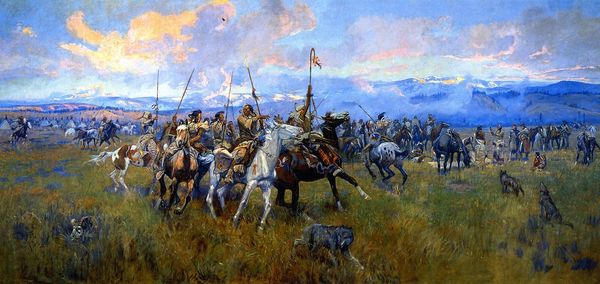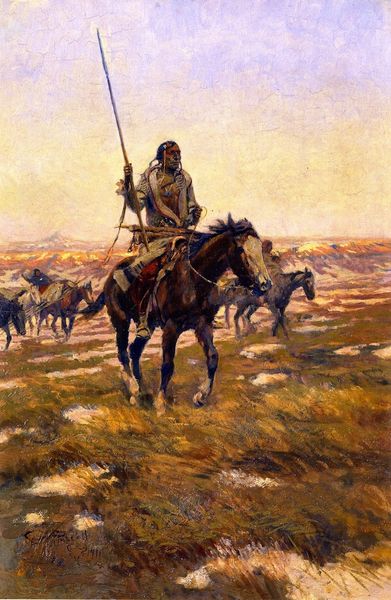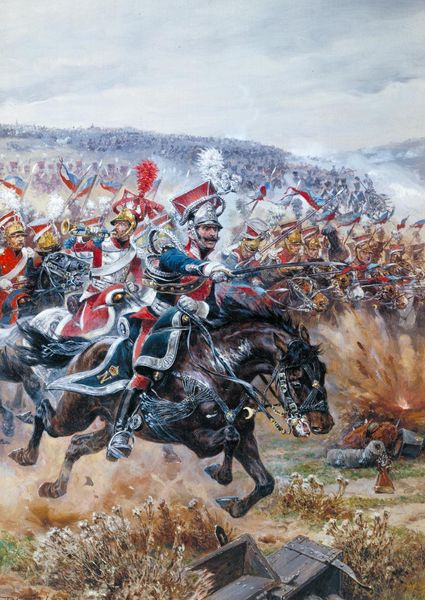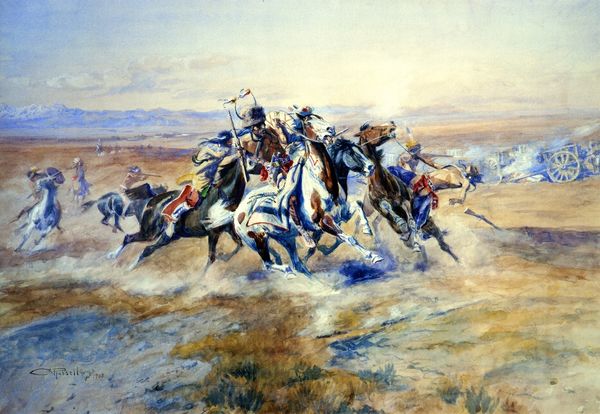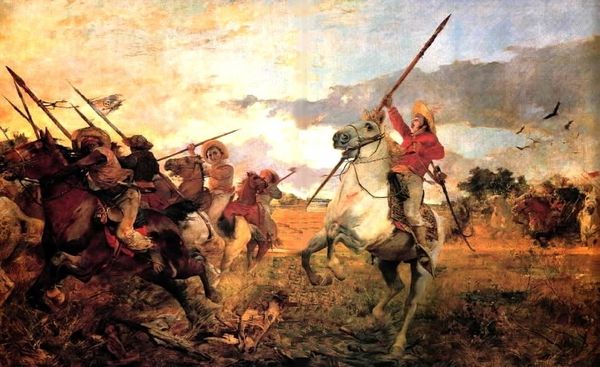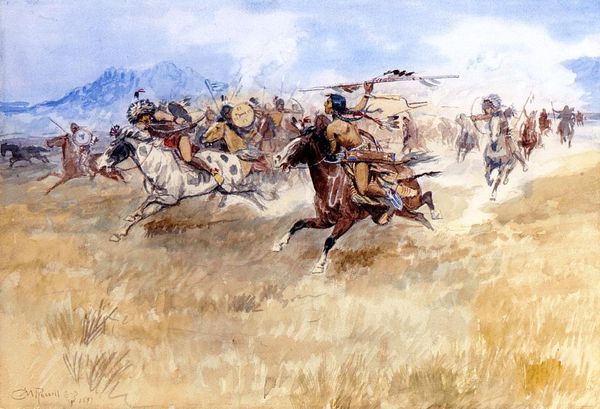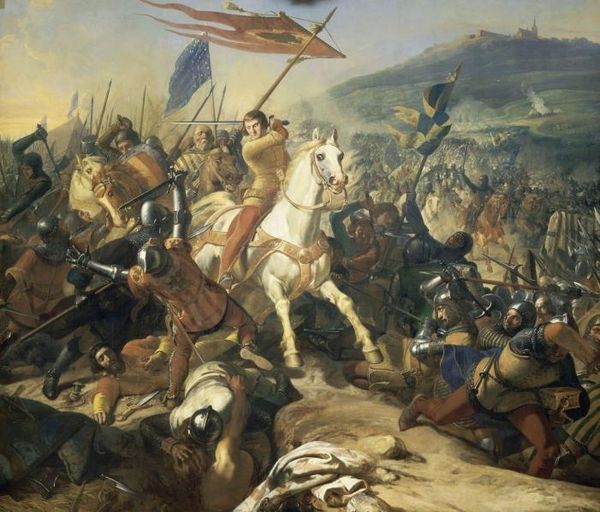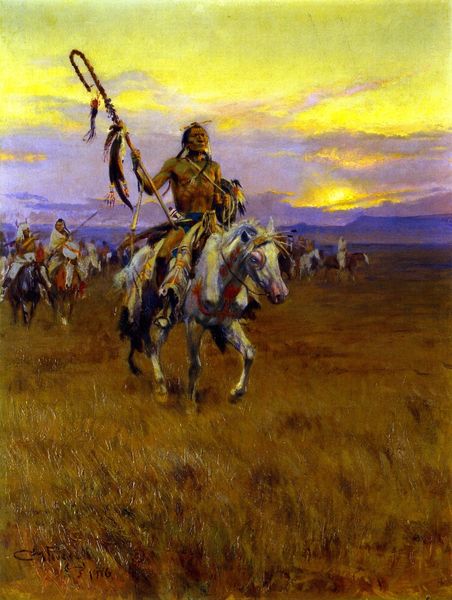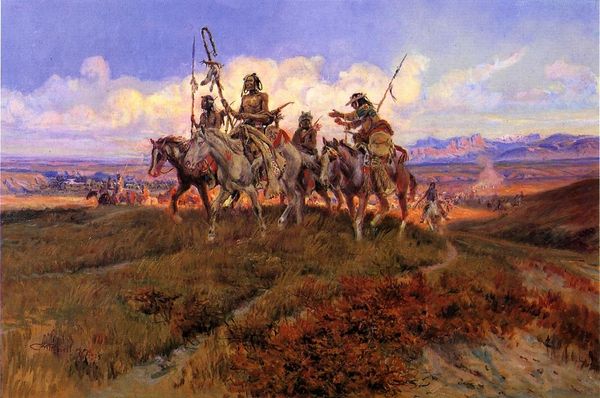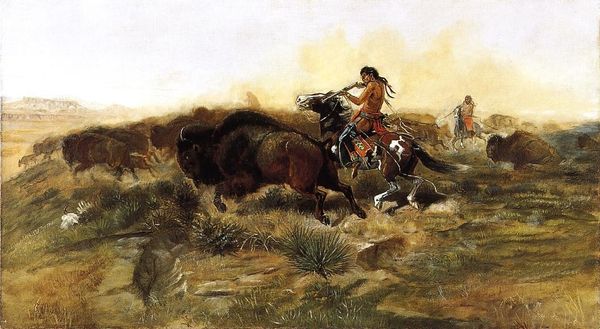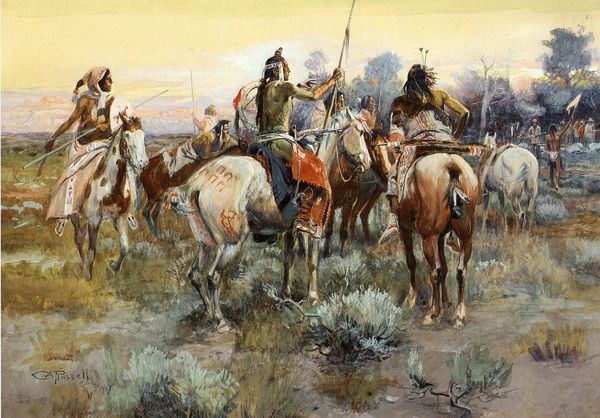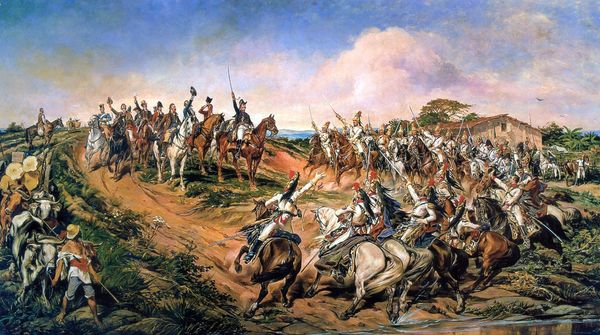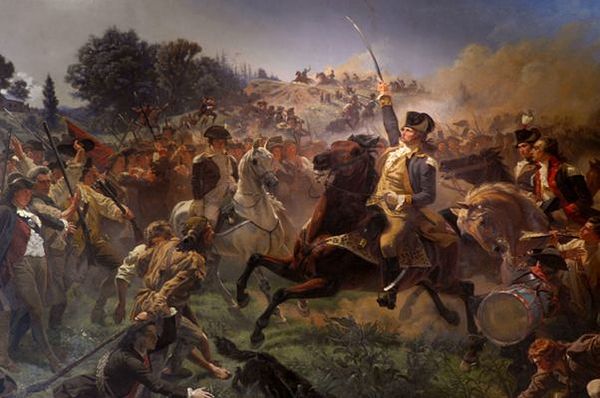
Copyright: Public Domain: Artvee
Editor: Here we have "The Charge," painted around 1900 by Jean-Baptiste Édouard Detaille. It's an oil painting depicting a cavalry charge. I'm immediately struck by the dynamic energy in this scene; it feels almost cinematic. What story do you think Detaille is trying to tell? Curator: The painting tells multiple stories, doesn't it? Primarily, it's a potent example of history painting, a genre very popular during the late 19th and early 20th centuries. It showcases the romantic, yet increasingly challenged, vision of warfare and national pride, shaped, of course, by the socio-political atmosphere. Do you see how the heroism of the individual, highlighted in the figure holding the flag, clashes with the obscured and somewhat anonymous mass of soldiers behind him? Editor: Yes, now that you point it out, there’s definitely a contrast between the heroic figure and the rest of the army. Is that contrast a conscious commentary, do you think? Curator: It certainly could be. The painting comes at a time when grand narratives of national glory are starting to be questioned. While celebrating military valor, it also subtly acknowledges the human cost and the collective experience of war, which is rarely neat or individually glorious. Consider also how such imagery was used in the context of the museum and the messages it conveyed to the public regarding patriotism and military service. Who, do you think, was this painting for? Editor: I suppose it was intended for the general public, maybe to inspire patriotism, but now it makes me think about how war is represented and what those representations leave out. Curator: Precisely. It allows us to consider the evolving attitudes towards conflict and the changing function of art within public discourse. It is both celebration and perhaps, a subtle critique. Editor: That gives me a lot to think about. Thanks for highlighting those complexities.
Comments
No comments
Be the first to comment and join the conversation on the ultimate creative platform.
